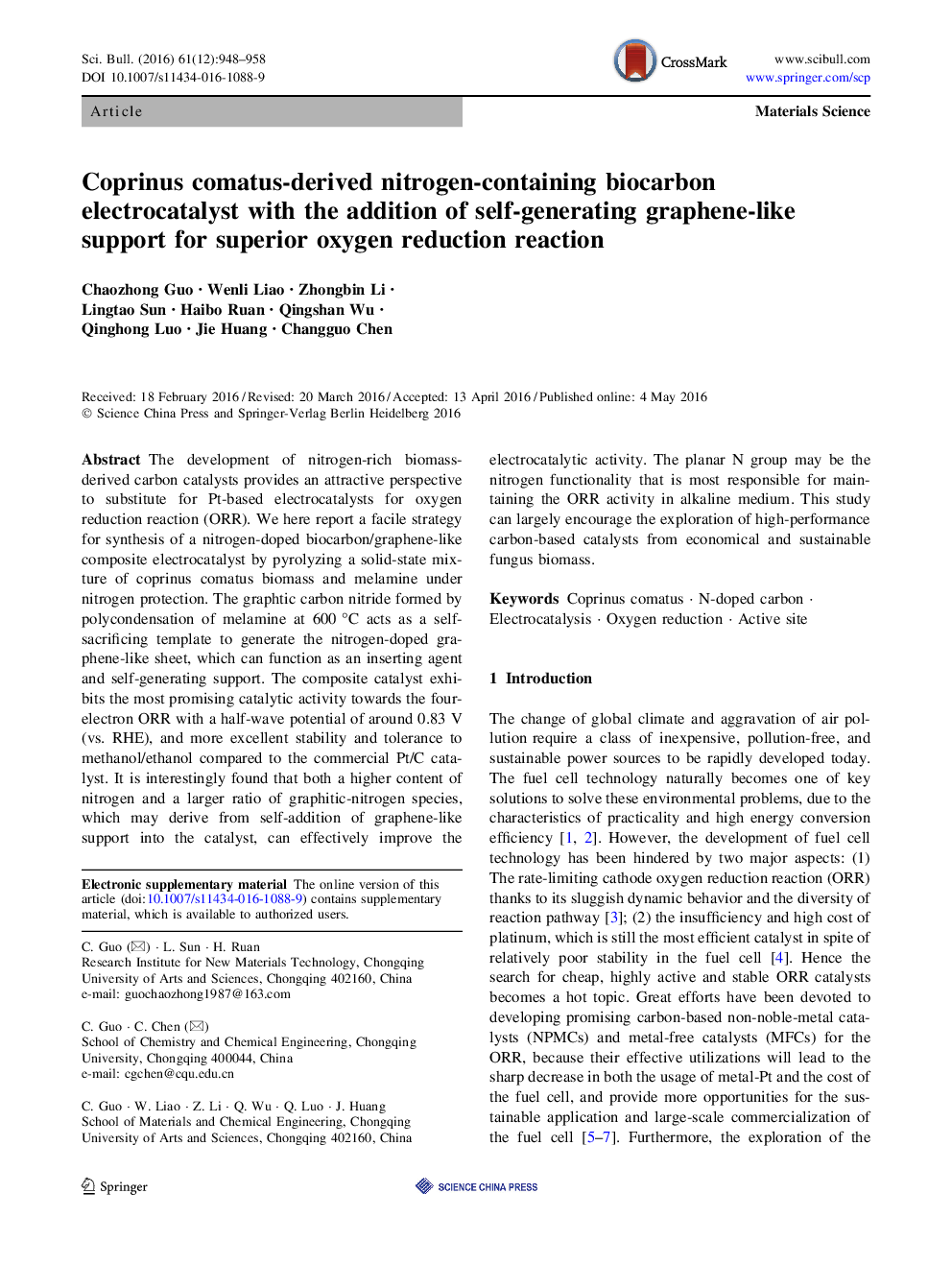| Article ID | Journal | Published Year | Pages | File Type |
|---|---|---|---|---|
| 5788921 | Science Bulletin | 2016 | 11 Pages |
Abstract
The development of nitrogen-rich biomass-derived carbon catalysts provides an attractive perspective to substitute for Pt-based electrocatalysts for oxygen reduction reaction (ORR). We here report a facile strategy for synthesis of a nitrogen-doped biocarbon/graphene-like composite electrocatalyst by pyrolyzing a solid-state mixture of coprinus comatus biomass and melamine under nitrogen protection. The graphtic carbon nitride formed by polycondensation of melamine at 600 °C acts as a self-sacrificing template to generate the nitrogen-doped graphene-like sheet, which can function as an inserting agent and self-generating support. The composite catalyst exhibits the most promising catalytic activity towards the four-electron ORR with a half-wave potential of around 0.83 V (vs. RHE), and more excellent stability and tolerance to methanol/ethanol compared to the commercial Pt/C catalyst. It is interestingly found that both a higher content of nitrogen and a larger ratio of graphitic-nitrogen species, which may derive from self-addition of graphene-like support into the catalyst, can effectively improve the electrocatalytic activity. The planar N group may be the nitrogen functionality that is most responsible for maintaining the ORR activity in alkaline medium. This study can largely encourage the exploration of high-performance carbon-based catalysts from economical and sustainable fungus biomass.
Related Topics
Physical Sciences and Engineering
Chemistry
Chemistry (General)
Authors
Chaozhong Guo, Wenli Liao, Zhongbin Li, Lingtao Sun, Haibo Ruan, Qingshan Wu, Qinghong Luo, Jie Huang, Changguo Chen,
